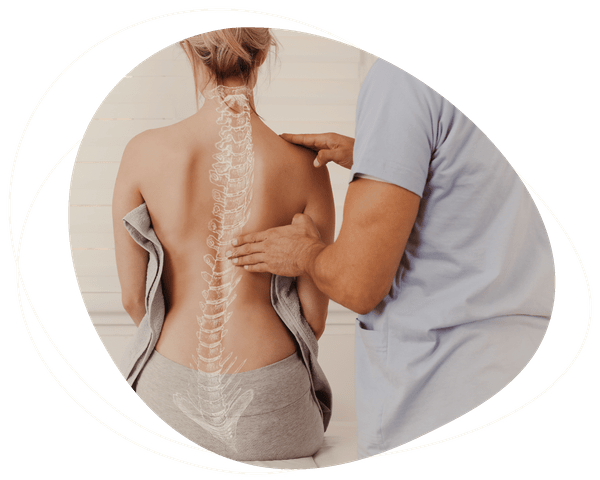Scoliosis Management
Incorporating Physiotherapy techniques, Pilates exercises with the Schroth Method Principles for Scoliosis
What is the Schroth Method for Scoliosis?
The Schroth Method for scoliosis management is a conservative method using a three dimensional approach to elongate the trunk to correct imbalances of the spine. It is a non-surgical option for scoliosis patients. The goal is to develop the inner muscles of the rib cage in order to change the shape of the upper trunk and to correct any spinal abnormalities. Pilates is well known for developing body awareness and deep core muscles to support trunk stabilization. Or unique physiotherapy approach to treat scoliosis combines the Schroth method principles with Pilates exercises. This includes instructions to perform specific exercises to straighten, centralize and de-rotate the spine with corrective breathing techniques.
The Goals of Exercises for Scoliosis Management:
- Stabilization of the curve(s)
- Mobilization of stiff body parts
- Improve postural alignment
- Teach activities of daily living
- Promotes corrections
- Enhance neuromuscular control
- Increase muscle strength and endurance
- Pain reduction
- Improve Cardio-pulmonary function
FAQ
Who would benefit from this Scoliosis treatment method?
The treatment is suitable for scoliotic patients of all ages and can be utilized to treat all stages of scoliosis, including after surgery or metal implants.
We treat Adolescent Scoliosis and Adult Scoliosis cases differently. The main goal of Adolescent Scoliosis Management program is to decelerate the curve of the spine and strengthen the deep spinal muscles to hold the spine centre and upright. For Adult Scoliosis Management program, the key is to release muscle and joint tightness, as well as to prevent pain and wear and tear of the joints.
It is important to start the program with private sessions led by either a physiotherapist or Pilates instructor specialising in this area. The private sessions are tailored to correct the spinal curvature of each individual. This allows the patient to fully understand his/her spinal curves and learn specific techniques using various equipment to address the problems.
What are the exercises like?
The exercises consist of a combination of stretching, strengthening, and breathing techniques. They are prescribed based on the curve patterns and severity, as well as the patients function and mobility. The goal is to create awareness of the new posture and alignment through position, repetitions and breathing. Exercises are designed to reduce the flat back and rib prominence and restore alignment of the pelvis. Exercise positions may be modified in order to create the optimal position for the patient. Various Pilates equipment are used to provide the body resistance and challenge in order to build core strength that will provide long term support for the spine.
The therapist guides the patient with tactile stimulus so the patient has an understanding of where they need to breathe and elongate to create muscle activation to correct the curve.
The exercises are tailored to each patient’s curves and can be done at home and as part of daily life. Once the patient is proficient with the exercises it will help halt curve progression, eliminate pain, and improve posture – for life. After a program of treatment you will have a comprehensive home exercise program specific to your curve type and needs.
Should I see a physiotherapist or instructor for to help with my scoliosis?
If you have acute or chronic pain due scoliosis, you should see our physiotherapist first. Our physiotherapist will help you get rid of the pain and start teaching basic schroth exercises to decompress the spine. Once the pain is stable, you will be referred to the instructor for continuous training. Our instructors will focus on improving your alignment, posture, strength and awareness of maintaining a good alignment of the spine..
Can the Schroth Method reverse scolioisis?
This mainly depends on the skeletal maturity of the patient. This method focuses on inhibiting curve progression, restoring muscular symmetry within the body, improving breathing, and creating postural awareness which in all gives an appearance of a straighter spine.
What makes the Schroth Method different from other more traditional scoliosis interventions?
Traditional interventions rely heavily on bracing and surgery. The Schroth Method gives patients the ability to take an active role in improving the curvature of their spines.
How long do I need to do the exercises to see results?
This depends on the severity of the curve, the age of the patient, and the rate of progression of the scoliosis curve. However, many patients in the clinic feel and see their muscles working differently immediately after each exercise session.

